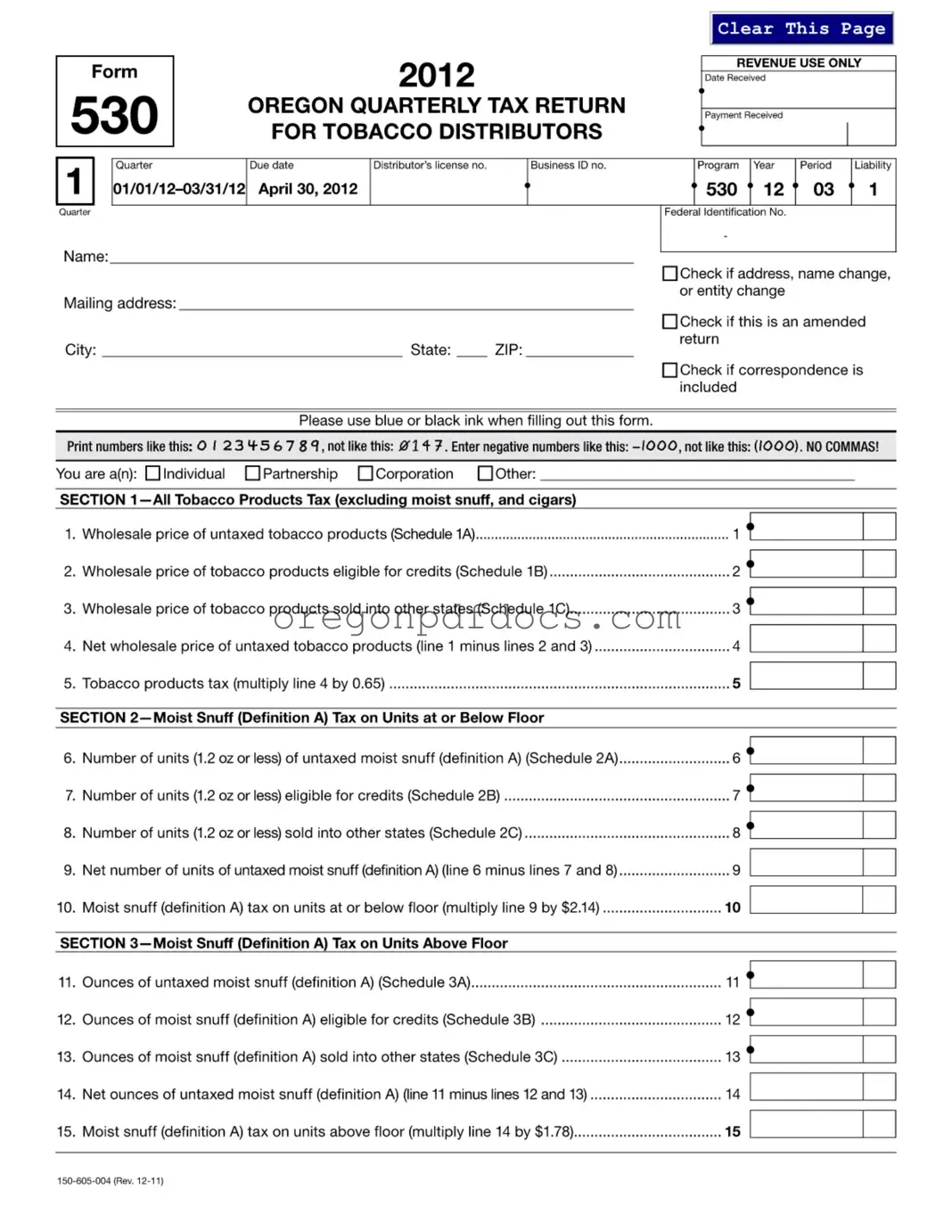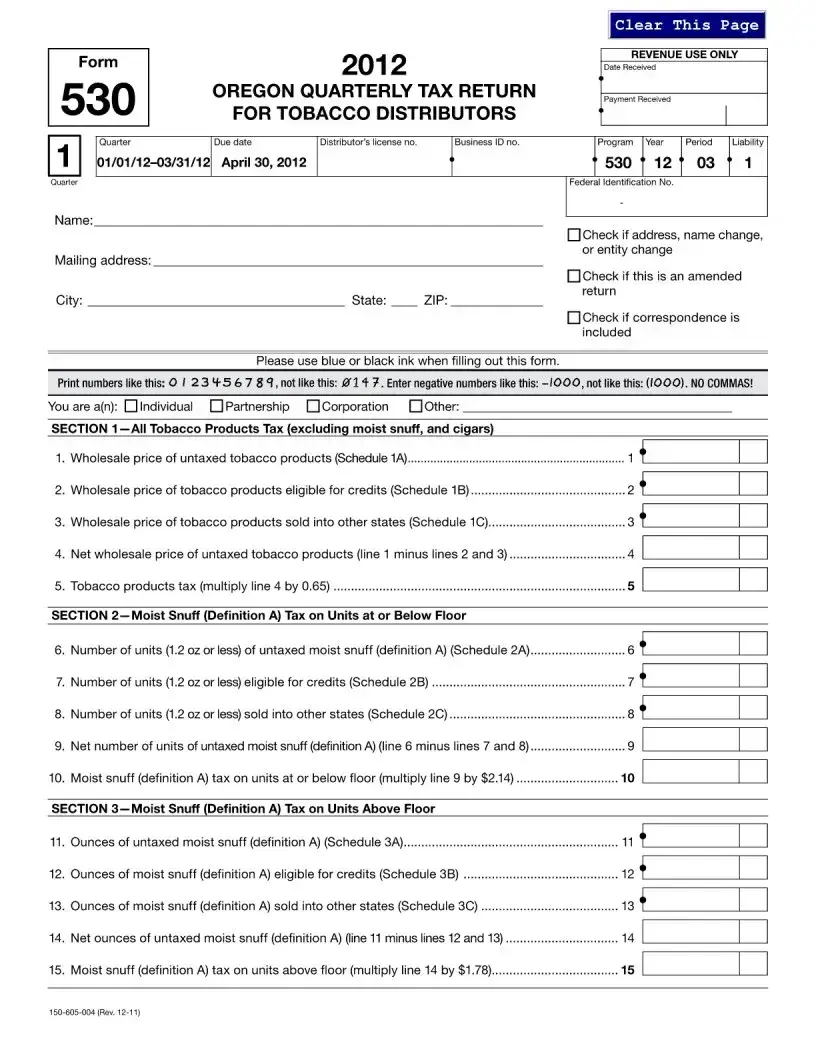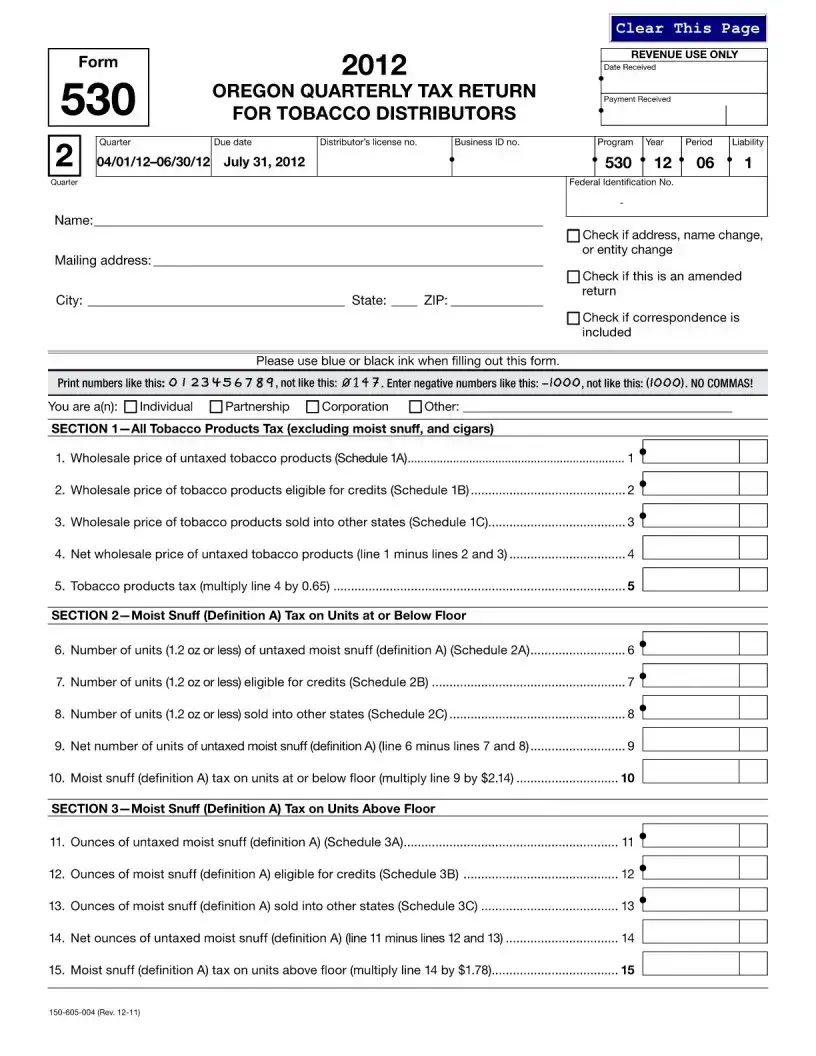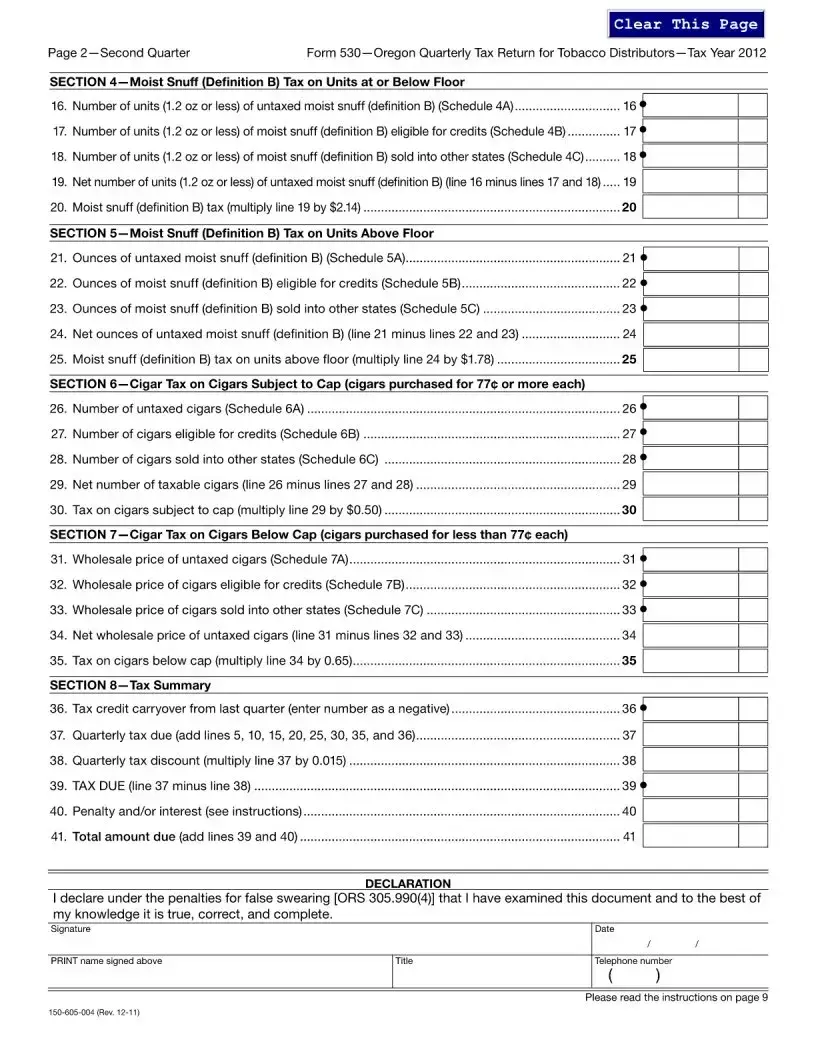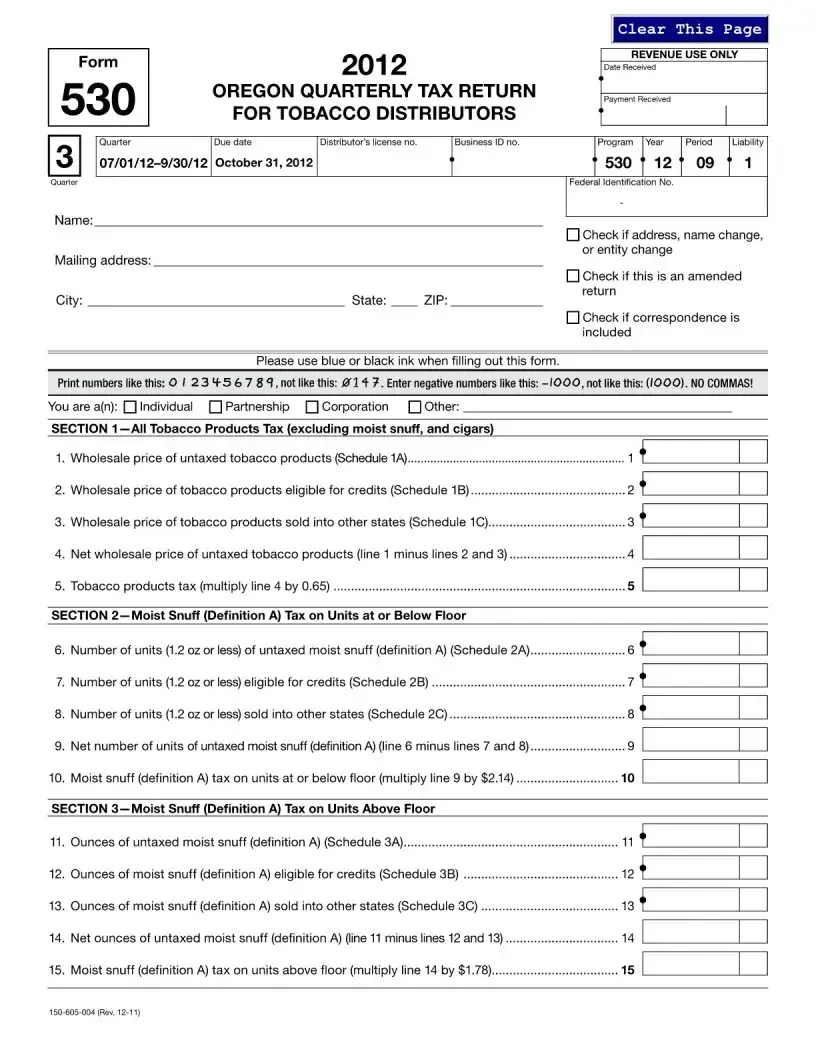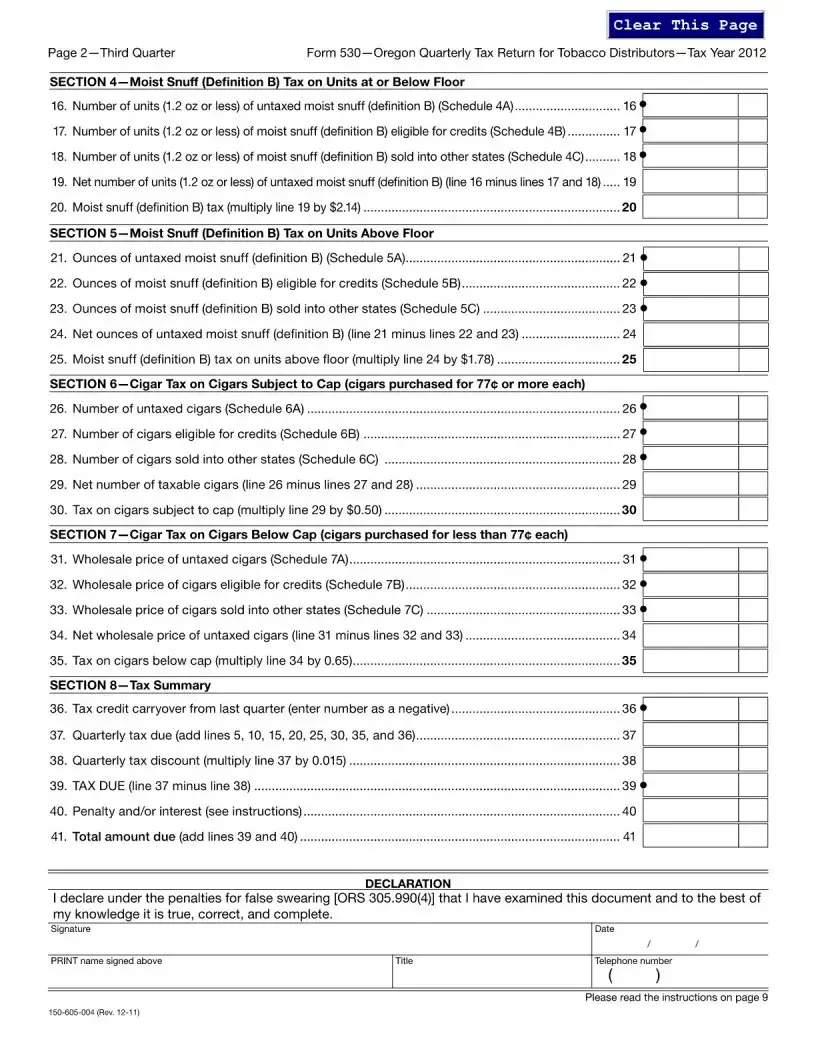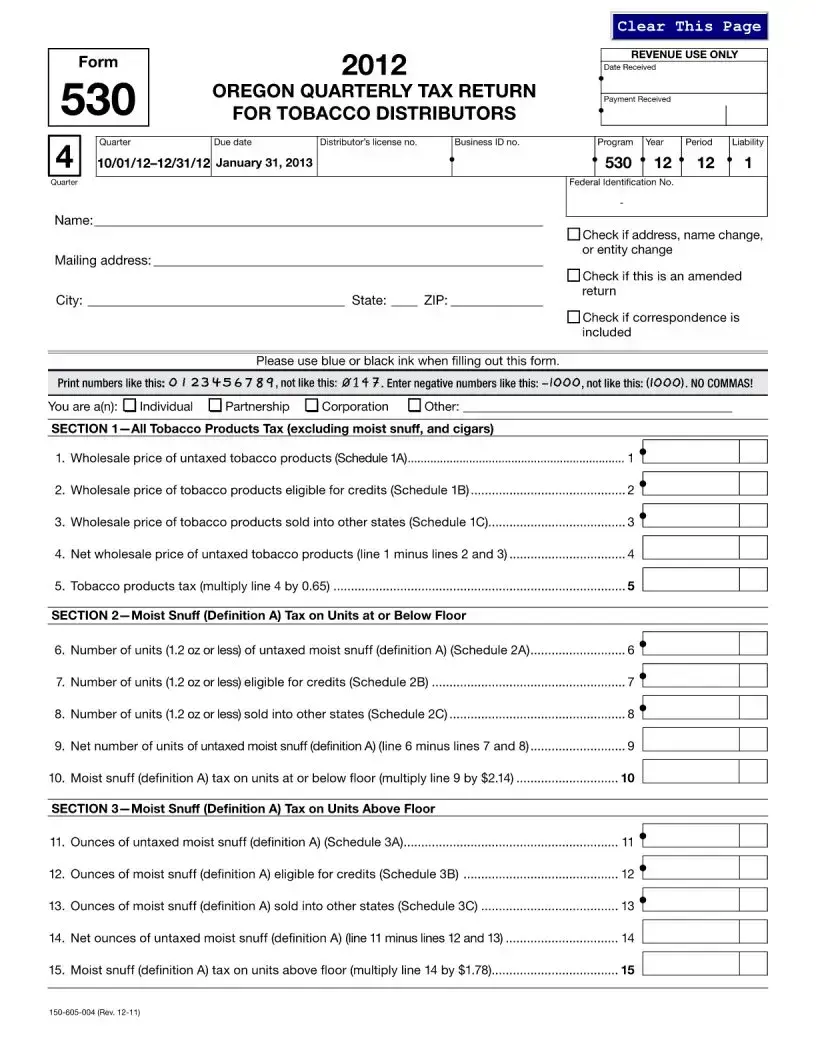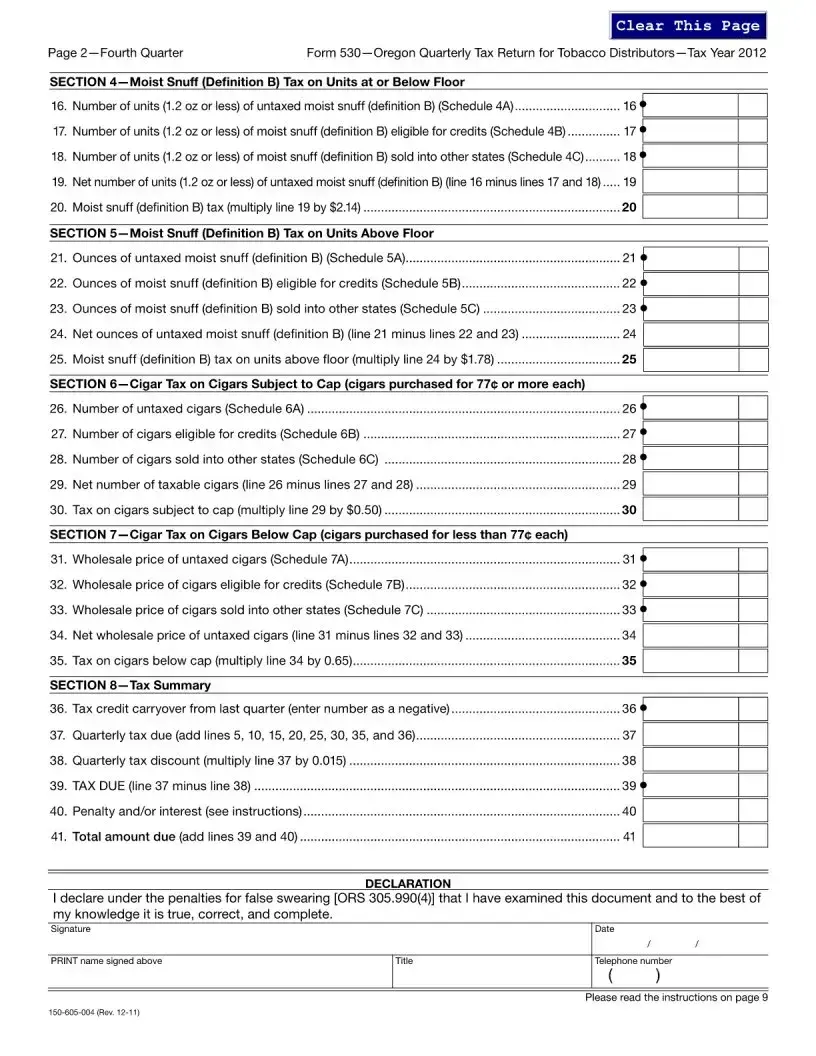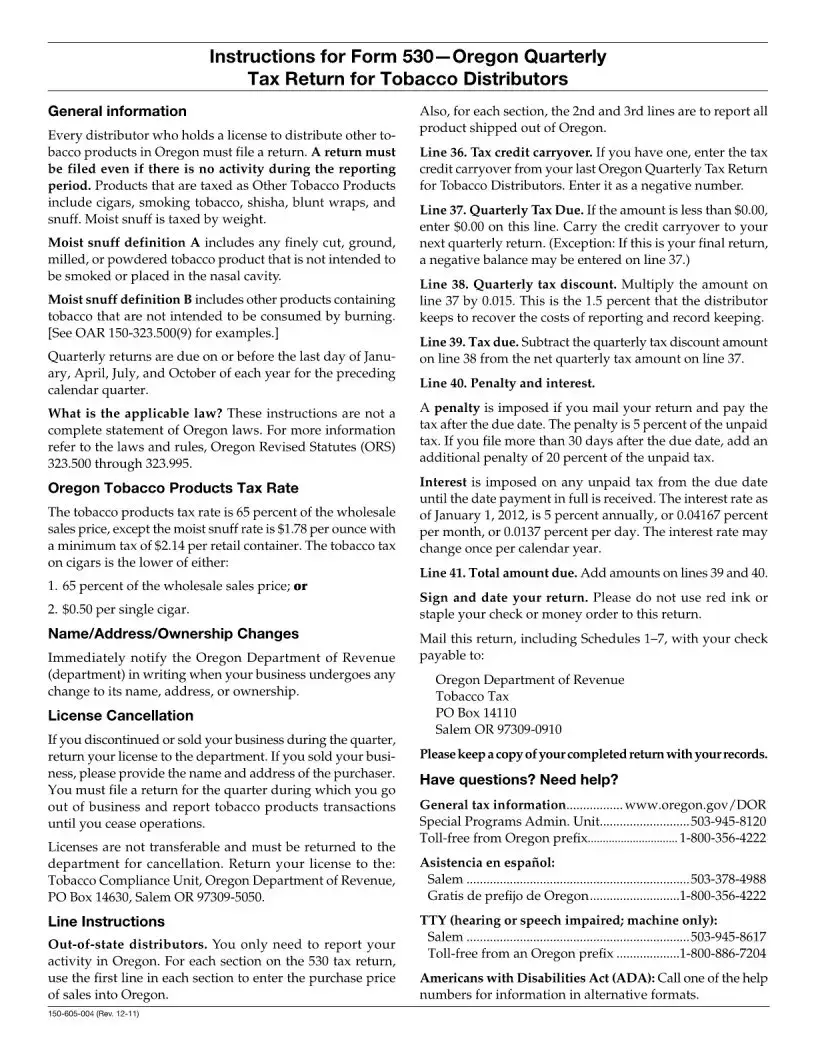Free 530 Oregon Form
The 530 Oregon form is a quarterly tax return specifically designed for tobacco distributors operating in Oregon. This form is essential for reporting the sales and tax obligations related to various tobacco products, including cigarettes, cigars, and moist snuff. Understanding how to accurately complete this form is crucial for compliance and avoiding potential penalties.
Ready to fill out the 530 Oregon form? Click the button below to get started!
Make My Document Online
